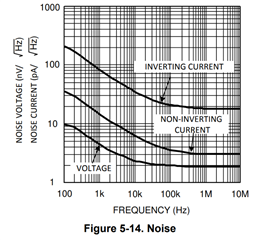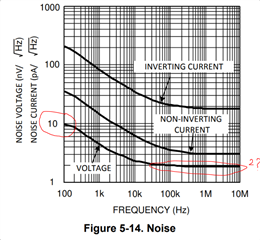Other Parts Discussed in Thread: THS4304-SP
Tool/software:
I need to make a noise analysis for my application using the LMH6702QML-SP. I know that the total noise will the sum of the:
- Voltage noise: The amplifier’s input voltage noise has a gain to the output that traces out the noise gain curve shown earlier in the Bode analysis. Only the zero is considered here since we will assume a frequency of integration that is less than the pole and set by a post-filter.
- Current noise: The amplifier’s inverting input current noise shows up at the output times the feedback resistor.
- and Resistor noise: The resistor voltage noise shows up directly at the output with no gain.

From the datasheet I got:
How can I compute that noise analysis? Do you have an excel table or noise tool for TIA?
Best regards,
Franck



